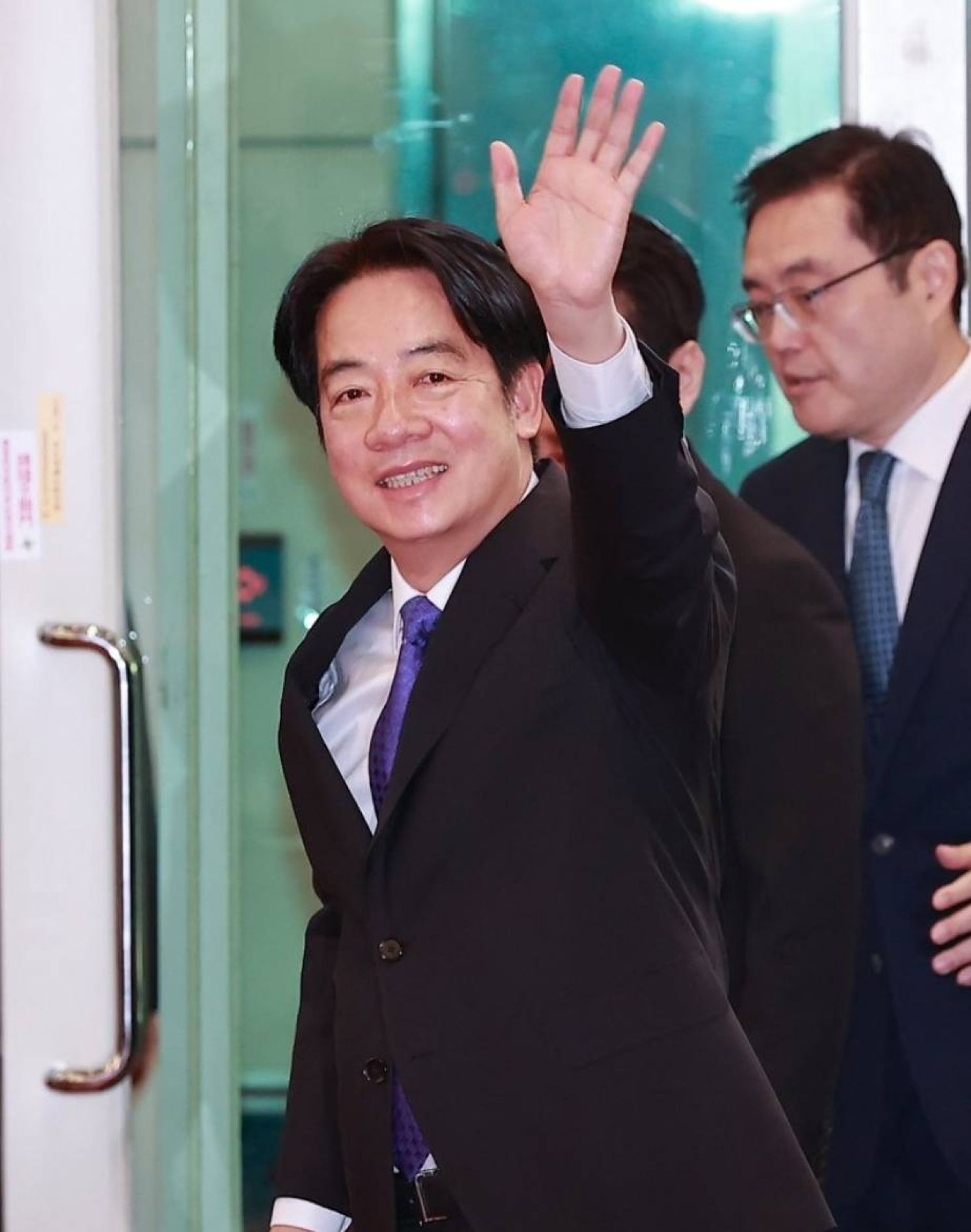
President Lai's Visit, PLA Exercise, and Is Trump Reliable?
United Daily News Editorial, November 28, 2024
President Lai Ching-te's upcoming visit to Pacific allies is stirring concerns, with national security officials hinting through Reuters that China may use Lai’s visit and transit through the United States as a pretext for conducting the "Joint Sword-2024C" military exercises near Taiwan. Officials suggest that China may use these drills to test the limits of the incoming Donald Trump administration's stance.
This is not the first time national security officials have warned of Chinese military exercises. Before President Lai's National Day address on October 10, officials predicted the "Joint Sword-2024B" drills, which took place as expected after the speech, indicating that national security experts are well aware of China’s red lines.
President Lai's visit will be his first foreign trip since taking office over six months ago, significantly delayed compared to the first trips made by previous presidents Ma Ying-jeou and Tsai Ing-wen. His route avoids transiting through the United States, highlighting the influence of U.S. factors in his planning.
Since taking office, President has actively arranged foreign trips, prioritizing transits through the United States and visiting diplomatic allies secondarily. Given the sensitive period of U.S. political transition, President Lai sought to avoid any complications. His presidential diplomacy plan was delayed until now, and it has finally been set for a trip that avoids the continental United States, but still includes transit through the United States.
Both the Office of the President and the Ministry of Foreign Affairs have declined to disclose the details of President Lai’s U.S. transit, but media reports suggest that President Lai may stop in Hawaii and Guam on his way to and from his destination. Compared to the potential impact of entering the continental United States, transiting through Hawaii and Guam should help reduce risks.
In fact, China’s current military exercises, "Joint Sword," adopted their name after President Tsai Ing-wen's transit through the United States and meeting with the House Speaker Kevin McCarthy in April last year. When then-Vice President Lai transited through the United States in August last year, China also conducted joint sea and air readiness drills.
U.S. President Joe Biden and Chinese President Xi Jinping recently held their final round of talks on the sidelines of the Asia-Pacific Economic Cooperation (APEC) summit in Peru. Biden urged China to stop its destabilizing military actions around Taiwan, while Xi emphasized that Taiwan is a red line and bottom line that cannot be challenged. According to Xi, if the United States wants to maintain peace in the Taiwan Strait, it must recognize the pro-independence nature of President Lai and the DPP administration, and handle Taiwan with extreme caution."
As soon as Xi finished speaking, President Biden had already cleared Lai’s U.S. transit. Although it avoids continental United States, it still involves a transit through American territory. Beijing considers President Lai’s transit to be a provocative act that violates the "One China” principle. Xi likely intends to use military exercises to remind the United States that if it truly wants to maintain peace in the Taiwan Strait, it must understand the key issues.
From the beginning to the end of 2024, "Joint Sword" exercises will range from A to C. Some people say they are tired of them, and Taiwanese people have grown indifferent. However, much like the talks between Biden and Xi, which were primarily aimed at Trump, if China conducts further military exercises, it will clearly be a message directed at Trump as well.
National security officials have leaked information through a tactic of "exporting to internal markets," emphasizing that China’s military exercises are aimed specifically at the U.S. and its allies. It seems to be a way of reminding Trump, "China is throwing punches at you," while simultaneously telling the public that the United States will take the heat. But is Trump reliable?
Mr. Trump demands that Taiwan pay more for protection, yet he also says that Taiwan is just over 100 miles from China and more than 9,000 miles from the United States, subtly implying that the United States will not intervene in a Taiwan Strait conflict. Moreover, according to Trump's transactional approach, China seems to only need to pay an additional 150 percent to 200 percent tariff in order to "enter" Taiwan without American interference.
If the "Joint Sword" exercises are intended to draw a red line, they are testing Trump, with the blade of the sword held against Taiwan's neck. President Lai has embarked on his visit to Pacific allies under the banner of "Smart and Sustainable Development for a Prosperous Austronesian Region,” but let’s hope he can use his wisdom to safeguard Taiwan’s prosperity and sustainability.
From: https://udn.com/news/story/11091/8391166?from=udn-catelistnews_ch2